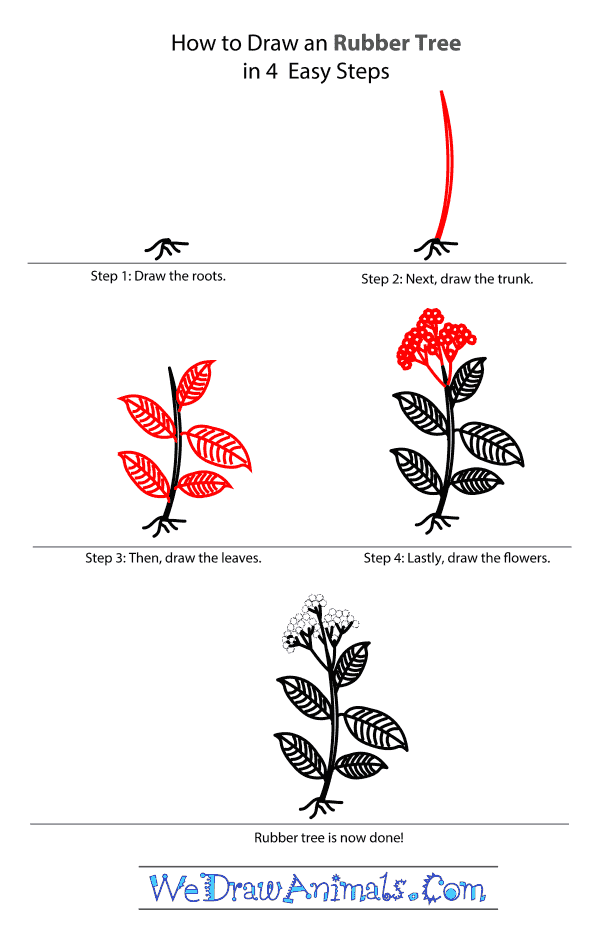In this quick tutorial you'll learn how to draw a Rubber Tree in 4 easy steps - great for kids and novice artists.
The images above represents how your finished drawing is going to look and the steps involved.
Below are the individual steps - you can click on each one for a High Resolution printable PDF version.
At the bottom you can read some interesting facts about the Rubber Tree.
Make sure you also check out any of the hundreds of drawing tutorials grouped by category.
How to Draw a Rubber Tree - Step-by-Step Tutorial
Step 1: To start draw the roots by making two small hills and then adding a couple of lines to those hills.
Step 2: Then draw the trunk which is shaped like a very skinny sliver moon.
Step 3: In this step draw the leaves by making pointed ovals off the trunk on either side. Within the oval draw a line down the middle and then draw lines coming of that line on each side.
Step 4: The last step is to draw the flowers. Start by drawing small lines off the top of the trunk. At the top of those lines draw lots of little circles until it looks like a bunch of flowers at the top of the tree.
Interesting Facts about Rubber Trees
Rubber Trees are tropical trees that grow in South America, Nepal, and India. The trees grow to 100 to 300 feet tall. They live for 100 years and have been known to tear up sidewalks and streets with their roots. A Rubber Tree’s leaves are large dark green ovals that have a waxy film. The leaves can grow to 14 inches long! They are tapped for latex that is used to make rubber. Latex is harvested by cutting the tree trunk and screwing a drip pan into place to catch the drippings. The rush to make rubber lead to an economic boom for the native tribes who had the knowledge, but soon greed caused the tree tapper to be cut out of the loop and the boom ended.
Did you know?
- A Rubber Tree can reach its full size in 13 years.
- The Aztec would waterproof their clothing and shoes with the Rubber Tree’s latex sap.
- A classic song “High Hopes” tells the story about 1 little ant moving a potted Rubber Tree plant.
- Many modern native tribes still depend on Rubber Tree tapping for money.
- Also known as “Rubberwood.”
Lesson Plan Note: Add a little greenery to your classroom by bringing in a potted Rubber Tree plant. Use the tree as a conversation starter when you study the tree.





